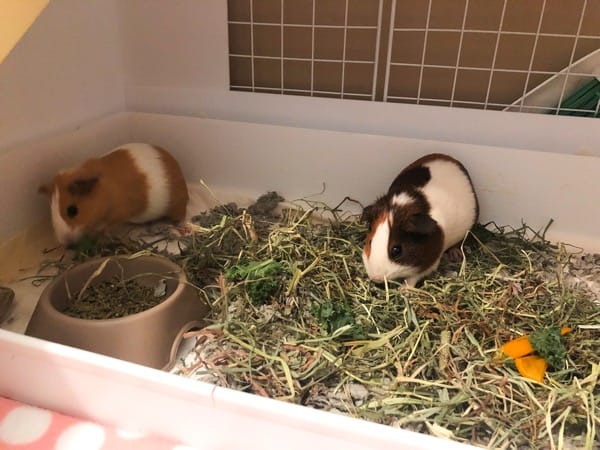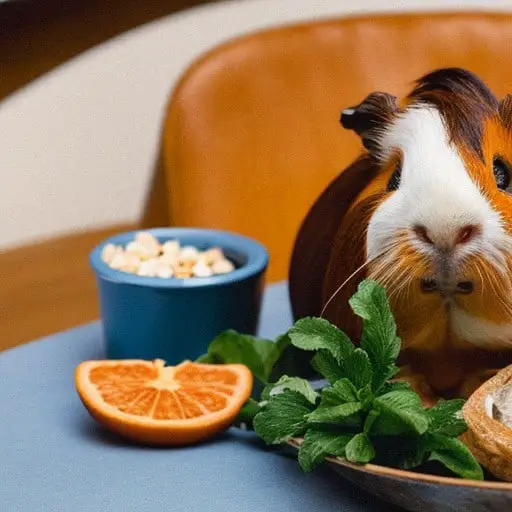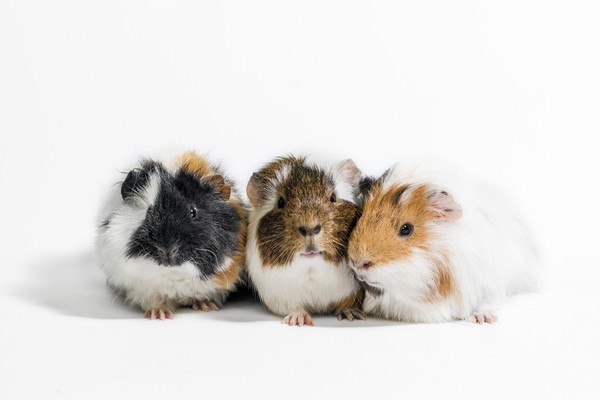What Fruit Can a Guinea Pig Eat?
We love giving our guinea pigs a variety of fruits, but we’ve got to be careful about what we offer. Some fruits are safe for guinea pigs, like apples, bananas, berries, and melons. But, we have to remember that these little guys need their fruit in moderation because of the high sugar content.
Removing the skin or peel from fruits like apples and citrus is a good idea before giving them to our furry friends. We also make sure to balance their diet with pellets, hay, and fresh veggies to keep them healthy.
And hey, don’t forget about vitamin C – guinea pigs can’t make it on their own, so we make sure they get enough.
Safe Fruits for Guinea Pigs
We guinea pig owners need to know which fruits are safe to feed our pets. Guinea pigs can eat a variety of fruits, but it’s essential to offer them in moderation.
Fruits like apples, bananas, and berries are excellent choices. Apples provide essential vitamins and minerals, but it’s best to monitor your guinea pig’s reaction to decide whether to leave the peel on. Small pieces of ripe banana can be offered as a soft and sweet treat. Berries such as blackberries, blueberries, and strawberries are also safe and enjoyable for guinea pigs.
When offering fruits like oranges, grapefruits, and tangerines, remember to peel them before giving them to your guinea pig. Ensure that the fruits are fresh and cut into small, manageable pieces to prevent choking.
Fruits to Feed in Moderation
When considering fruits to feed in moderation, it’s important to be mindful of the sugar content and potential impact on a guinea pig’s diet. Here are some fruits that should be offered in small quantities:
- High Sugar Content Fruits:
- Kiwi: Feed in low amounts due to high sugar content and monitor the guinea pig’s reaction to it before deciding the portion size.
- Blueberry: Feed in small amounts occasionally due to high sugar content, and test with small amounts first to ensure it’s well-tolerated.
- Cantaloupe: Feed no more than two servings per week due to high sugar content and remove all seeds to avoid choking hazards.
- Apple: Feed in moderation to avoid excessive sugar intake and consider leaving the peel on for added fiber, depending on the guinea pig’s preference.
- Orange: Peel before offering to the guinea pig and provide in small portions occasionally due to its high vitamin C content.
Remember to consult a veterinarian and always offer your guinea pig fresh water, guinea pig pellets, and leafy greens alongside fruits and vegetables.
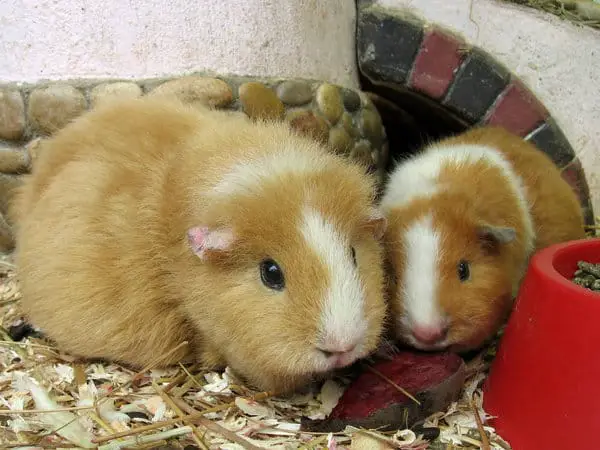
High-Sugar Fruits to Avoid
As for the high-sugar fruits to avoid, let’s be cautious when offering certain fruits to our guinea pigs. Fresh fruits and vegetables are essential for guinea pigs to eat, as they need high levels of vitamin C to stay healthy.
However, some fruits are high in sugar, which can be harmful if not offered appropriately. For instance, kiwi, banana, blueberry, cantaloupe, and apple are high in sugar and should be fed in moderation. A guinea pig needs around 10-30 mg of vitamin C per day, so while these fruits can be part of their diet, they should be given in small amounts occasionally.
It’s crucial to strike a balance to ensure that our guinea pigs receive the necessary nutrients without consuming excessive sugar.
Best Ways to Serve Fruits
To ensure our guinea pig’s health and enjoyment, it’s important to serve fruits in ways that cater to their specific dietary needs and preferences. When serving fruits to guinea pigs, it’s essential to consider their digestive system and nutritional needs. Here’s how to serve fruits to guinea pigs:
- Freshness: Ensure the fruits are fresh and free from mold or rot.
- Variety: Offer a variety of fruits to provide different nutritional benefits and cater to their preferences.
- Preparation: Wash fruits thoroughly to remove any pesticides or residue before serving them to the guinea pig.
- Portion control: Serve fruits in moderation as part of a balanced diet that includes hay and fresh vegetables.
- Feeding frequency: Introduce fruits gradually and monitor the guinea pig’s reaction to avoid digestive issues.
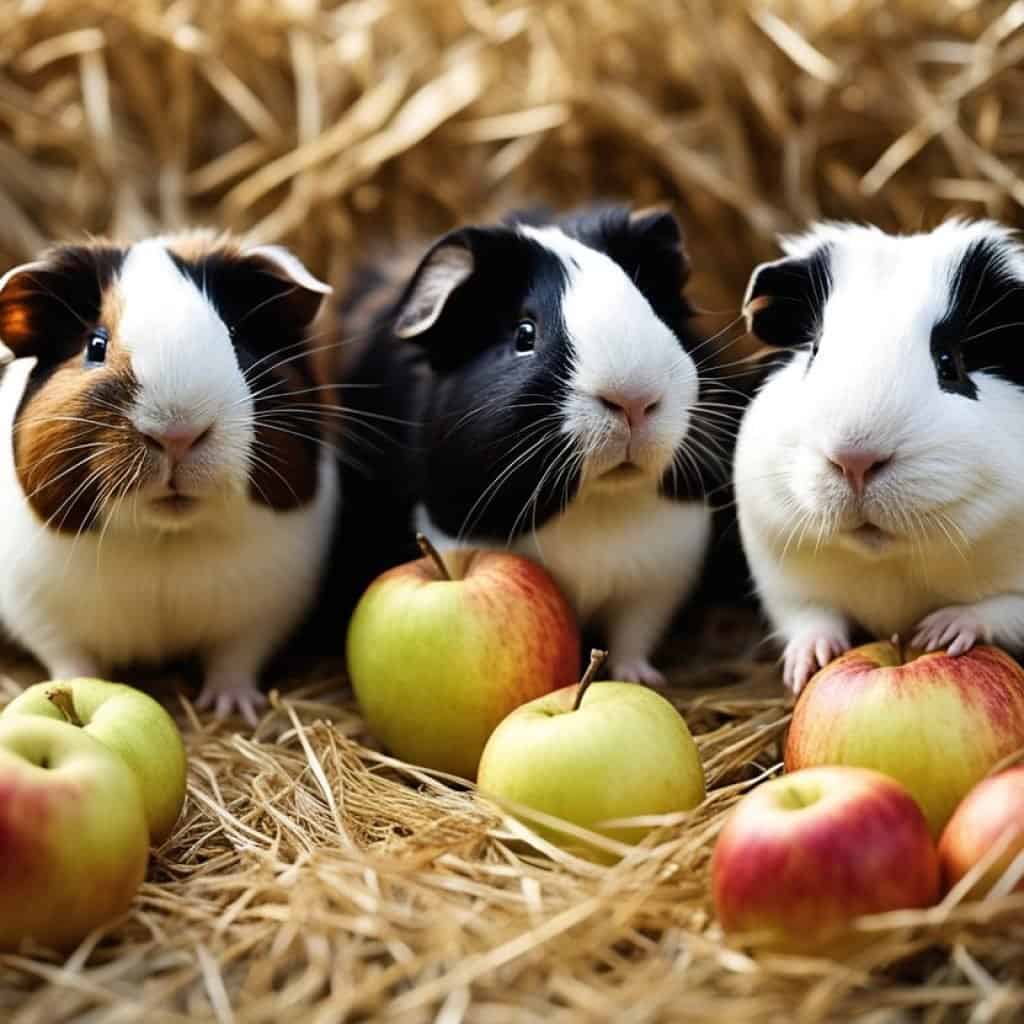
Introducing Fruits to Your Guinea Pig
Let’s start by offering a small portion of a single fruit to your guinea pig to gauge their reaction and decide whether to continue with the skin on or remove it. Introduce fruits gradually, starting with a small piece once a day, and monitor your guinea pig for any adverse reactions.
Ensure that the majority of your guinea pig’s diet consists of hay to maintain a healthy digestive system. When introducing new fruits, it’s important to continue providing a balanced diet that includes hay, guinea pig pellets, and fresh water.
Fruits can be a great source of essential vitamins for your guinea pig, but it’s crucial to feed them in moderation. Remember that introducing a variety of fruits and vegetables to your guinea pig’s diet can provide a range of healthy nutrients and produce a well-rounded feeding plan.
Conclusion
In conclusion, guinea pigs can enjoy a variety of fruits in moderation, such as apples, bananas, berries, and melons. It’s important to remove any skin or peel, and to avoid high-sugar fruits like citrus.
Make sure to provide a balanced diet of pellets, hay, and fresh vegetables, and consider offering vitamin C supplements to meet their nutritional needs.
Always introduce new fruits slowly and monitor your guinea pig for any adverse reactions.



